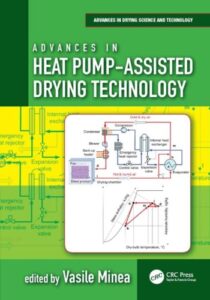Advances in Heat Pump-Assisted Drying Technology
Advances in Heat Pump-Assisted Drying Technology
This book, Advances in Heat Pump-Assisted Drying Technology, reviews recent innovations and system improvements proposed by academic and industry R&D communities. They focus on various aspects ranging from technological advancements in heat pumping in general to optimal dryer–heat pump coupling and control strategies, system modeling and simulation, and in-field long-term experiences. Drying of solids is one of the most common, complex, and energy-intensive processes existing in many industrial sectors such as food, agricultural, pulp and paper, pharmaceutical, ceramic, and wood. It is a mix of fundamental sciences and technologies; it is also based on extensive experimental observations and operating experience.
You can also Read Master basic plumbing and central heating 2015
ADVANCES IN HEAT PUMP-ASSISTED DRYING TECHNOLOGY Content
- Contents
![Heat Pump-Assisted Drying Technology Heat Pump]()
- Series Preface
- Preface
- Acknowledgments
- Series Editor
- Editor
- Advances in Industrial Heat Pump Technologies and Applications
- Modeling, Simulation, and Optimization of Heat Pump Drying Systems
- Advances in Heat Pump-Assisted Agro-Food Drying Technologies
- The Advances in Heat Pump-Assisted Drying of Fruits
- Advances in Heat Pump-Assisted Technologies for Drying of Vegetables
- Drying of Fruits and Vegetables: The Impact of Different Drying Methods on Product Quality
- Numerical Modeling of Heat Pump-Assisted Contact Drying
- Advances in Dehumidifier Timber Drying in New Zealand
Depletion of fossil fuels and increasing requirements for the environment protection have prompted academic and industrial R&D communities to develop and promote new, more efficient heating and cooling systems, as heat pumps recovering industrial waste heat (Srikhirin et al. 2001), combined or not with renewable energy sources, such as solar (Nguyen et al. 2001) and/or geothermal energies.
This chapter summarizes recent R&D advancements in heat pump technology and applications, including those reported for industrial drying. The review of R&D advancements refers to new components, such as compressors, working fluids, and heat exchangers, and advanced heat pumping cycles and control methods aiming at enhancing the system’s overall energy performances, whereas new industrial applications mainly focus on heat pump integration with various energy sources, such as waste heat and solar energy, and industrial processes such as drying, evaporation, also distillation.


Comments are closed.